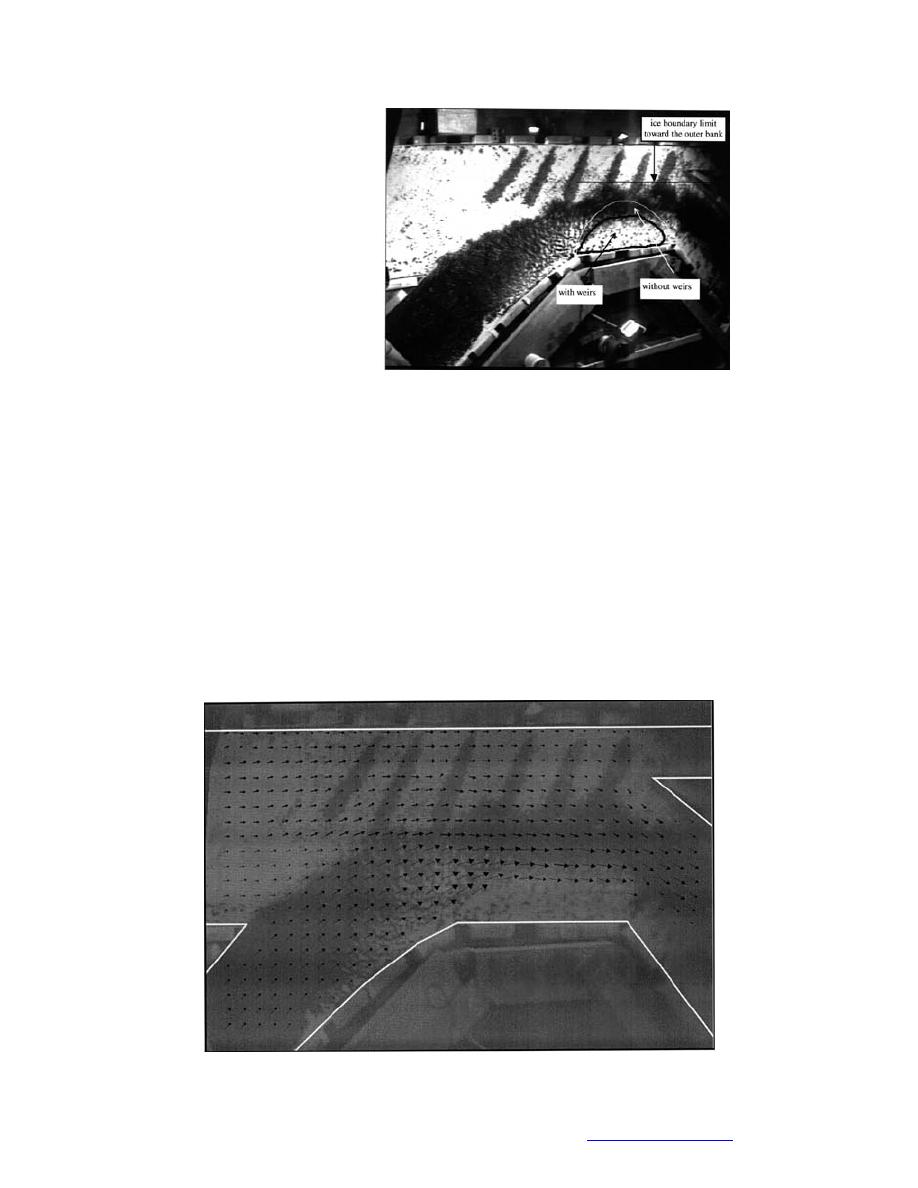
bank of the confluence
(Fig. 51 and 52). On the ba-
sis of this test, it appears
that the bendway weirs
will dramatically reduce
the incidence of ice jams in
the confluence. This tenta-
tive conclusion, however,
required verification by
actually reducing the bar
size in the model.
Confluence with bendway
weirs and reduced bar
The increase in flow Figure 51. Ice run through the confluence with bendway
velocities along the con- weirs.
fluence bar (and over the bar, during times of higher flow) would reduce the size
of the bar by erosion. The effect of reduced bar size on ice conveyance through the
confluence was simulated in a successive manner whereby the bar was reduced
successive steps. Not all the steps are discussed here; only the final step is pre-
sented. The confluence bathymetry in the model was deepened to simulate a re-
duced bar size slightly less than the size of the separation zone in the confluence
fitted with the bendway weirs. The resulting flow field is as depicted in the photo-
graph of Figure 53 and the LSPIV mapping given as Figure 54. The widening of
the confluence channel associated with the reduction in bar size slightly reduces
the overall magnitude of flow velocities through the center of the confluence. In so
doing, it additionally diminishes the size of the flow-separation zone; therefore
the modeled bar size was chosen to be slightly less than the size of the flow sepa-
ration zone. Although the bulk flow velocity is reduced, the increase in surface
area of flow enhances the ice-conveyance capacity of the confluence.
Figure 52. Vector plot of velocities for ice and open water flow in Figure 51.
57
Back to contents page



 Previous Page
Previous Page
